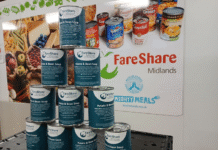Europe is falling behind on its race to meet the European Union (EU) target of 90 percent collection of plastic bottles by 2030, according to new research by ICIS. Results of the ICIS survey of the European RPET (recycled polyethylene terephthalate) industry in 2019 show that progress has been made, but this progress is being threatened by inadequate collection strategies and high contamination levels when it comes to PET bottles.
Overall, the region saw a recycling rate of 46 percent, a rise of two percent on the rate in 2018. “This is a marginal improvement, but still less than half of the bottles put into the market are recycled,” Helen McGeough, senior analyst of Plastic Recycling at ICIS, said. “Given that PET is one of the most recyclable polymers in the market and the recycling infrastructure is more mature than other polymers, the question remains as to why this is not advancing to higher recycling rates.”
“This reflects the wider issues facing the sector in terms of a collection and sorting infrastructure managed principally by national governments that have not invested in systems to manage the proliferation in waste composition and consequently can produce poor quality recyclables. The recycling sector inherits materials with reducing yields while end-users demand even higher quality R-PET output,” added McGeough.
Failings of the collection strategy
Collection volumes of post-consumer PET bottles reached 2.2m tonnes in 2019, an increase of five percent on 2018, which is the highest growth rate in several years. However, the overall collection rate across the region increased just one percent to 64 percent in 2019, so over a third of post-consumer bottles remain uncollected.

The PET recycling industry responded to the boom in demand for R-PET supply during 2018 by increasing its capacity by 11 percent. However, not only did collection rates not match this growth in capacity but nor did the availability of the highest quality colourless bales. Deposit return scheme (DRS) bales represented 31.6 percent of the total supply compared to 33 percent in 2017.
Although the feedstock supply may have increased in volume, so too did contamination levels. The average yield across the region was 69.5 percent in 2019, down from 71 percent in 2018. According to McGeough, this was “unsurprising given the reduction of PET waste exports to China, due to the waste import ban, and pushback from other Asian markets unable and, or, unwilling to accept shipments and become a dumping ground for the rest of the world. These typically lower-quality materials have since been absorbed into the domestic waste stream and contribute to the overall reduction in yield.”
Key market players struggling to meet recycling targets
The key drivers to the R-PET market are brand pledges and legislation, mainly the SUP Directive, which mandates the use of recycled content in bottles, pushing the supply increasingly towards the bottle market.
The bottle industry must achieve 25 percent recycled content in PET bottles by 2025 (under SUP Directive), and the study shows growth in the R-PET penetration of the food contact bottle market at 14.5 percent, rising from 10.7 percent in 2018. However, this is still over 10 percent below the mandated target and way below the ambitions of influential brands going way beyond these levels, up to 100 percent for segments of their portfolios.
The ICIS report showed that in 2019 the share of R-PET supply absorbed by the food contact bottle market rose to 32 percent compared with 25 percent in 2018, reflecting this trend and pull through the supply chain from significant beverage brands ambition to offer more sustainable packaging for their product as consumer pressure continued to build after the extremely high profile of plastics pollution in the natural environment – often cited as the Blue Planet effect.
“The 2019 survey shows improvement in many aspects of the R-PET supply into the market,” McGeough concluded. “However, there are still challenges to overcome, mainly at the front end of the chain. These include the improved collection in terms of quality as well as quantity, improved design for recycling and sorting to reduce waste rates, and growth in the supply of highest quality R-PET to meet the frantic demand of bottlers.”
The 2020 ICIS European RPET survey was conducted across 28 countries in West Europe over the period April to November 2020. Those countries include the 28 EU member states, excluding Malta and Cyprus, plus Norway and Switzerland. The primary focus of the study was the RPET industry in 2019, with detail on each of the main elements of the supply chain: collection, recycling, and end-use. The report is a collaborative effort, including national authorities, compliance agencies, deposit return schemes, and recyclers.











